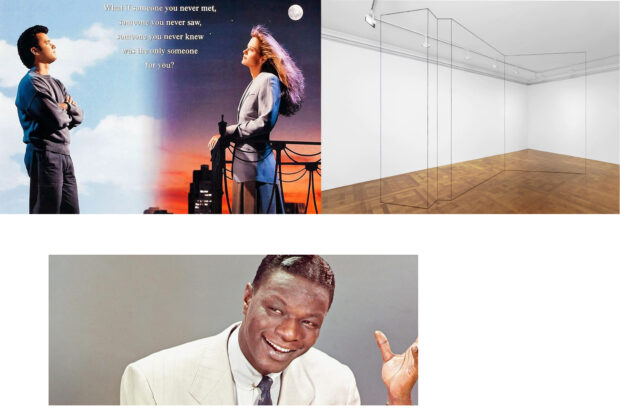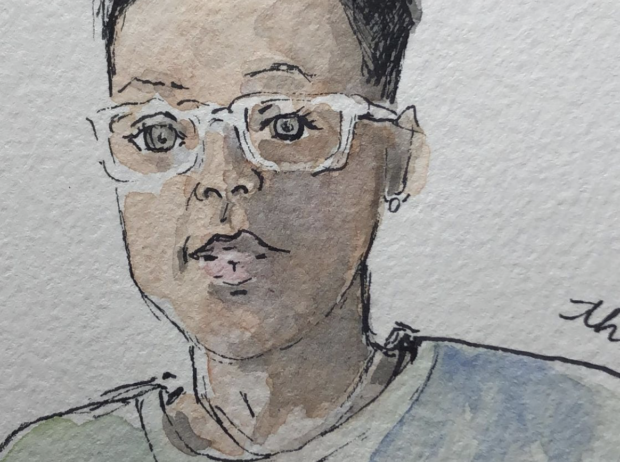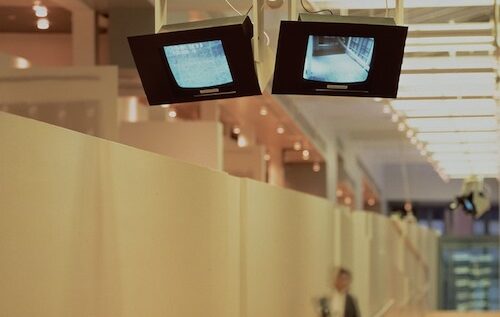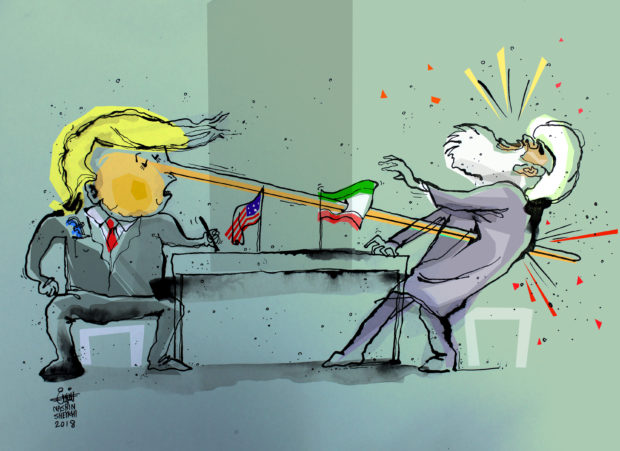Editor’s Note: This review was written directly following Iftikhar Dadi’s lecture at the Institute of Fine Arts on April 12, 2011. It has been reprinted here in its original form.

On April 12, 2011, Professor Iftikhar Dadi delivered the inaugural lecture of the Colloquium on Modern and Contemporary Art from the Middle East and South Asia (MESA) at the Institute of Fine Arts. Dadi is a practicing artist and an associate professor in the Department of the History of Art at Cornell University, as well as the author of the recent Modernism and the Art of Muslim South Asia (University of North Carolina Press, 2010). His lecture at the IFA, entitled “Between Global Media and the Urban Subaltern,” contained three parts: first, Dadi’s take on the rhetoric surrounding modern art in South Asia and the Middle East; second, an analysis of major artists involved in the development of modernism in this region; and third, a presentation of Dadi’s own artistic collaborations with his wife, Elizabeth Dadi.
Employing Andreas Huyssen’s conception of “modernism at large,” Dadi situated artists working in South Asia during the twentieth century within a transnational Muslim modernism rather than within nationally specific modernities. He further argued that this modernism was liberating despite its Eurocentrism, positively influencing artists working in South Asia and the Middle East because it allowed them to decolonialize Islamic art. Thus they could use the visual language of Islamic art to develop a new subjectivity that was intrinsically South Asian Muslim. Dadi first discussed well-known Pakistani artist Sadequain Naqqash (1930-1987), whose paintings draw upon the Islamic tradition of calligraphy. Naqqash simultaneously aligns his work with modernist movements such as Cubism, using abstracted letterforms that obstruct a strictly narrative reading of the text. Referencing the Mughal Empire, which ruled the Indian subcontinent from the mid-sixteenth to the mid-nineteenth centuries, Dadi described another Pakistani artist, Abdur Rahman Chughtai (1899-1975), as “a Mughal artist working in a time of print culture.” Chugtai’s paintings make use of imagery similar to that of traditional Mughal miniatures, creating a subjectivity based on historical precursors as well as on the contemporary intellectual scene.
In his lecture Dadi argued that modernism has typically been understood as “a process of metaphorization that transcends specificity,” in comparison with the more socially engaged contemporary period. He denounced both the separation between modern and contemporary art that frequently occurs in curatorial projects and the ahistoricity with which contemporary art is often interpreted. This point is valid—as a member of the public, I have visited many exhibitions of contemporary art in recent years wherein zero attention was paid to social context.
A contradiction arose, however, when Dadi discussed the reception of modern art in conjunction with the notion of the subaltern. In the first section of his talk, he asserted that the development of modernism in the visual arts necessitated the development of institutions that work to make modern art legible to an audience. In the second and third sections, he extended that observation, stating that artistic practice cannot be recognized as such without the existence of an audience conditioned by these institutions. Since Karachi has no museum of modern art, he added, it is thus difficult for unprepared Pakistani audiences to consider work by local artists as art.
I wish Dadi had advanced this thought more critically. While it may be true that the Pakistani art world has fewer organized outlets than do some other countries, Dadi’s theory seems both problematic and too simplistic to apply to this situation. Is it not the responsibility of the art historian to recognize, and subsequently to analyze, whatever sort of audience exists in a certain context, regardless of whether it can be considered “institutional” or not? And does not Dadi’s claim—that local audiences do not see works by modern Pakistani artists as ‘art’—also beg the point that the refusal to consider a body of work ‘art’ is itself a type of reaction from an audience, even if it is not the reaction art historians might prefer? It seems that the concept of art itself is at stake here—isn’t art history chock full of things we now consider art, yet which were not regarded as such in their original contexts?
The aforementioned contradiction deepened when Dadi coupled the understanding of modern art as dependent on institutional recognition with his idea of the subaltern as an “informal sector that exists in the shadow of representation itself.” He acknowledged that much cultural activity in Pakistan takes place in this informal subaltern sector–which is also the location of the massive public. Given such a locus of activity and reception, we might ask, how crucial is an institutionally conditioned audience for art? Dadi argues that a conditioned audience is integral to the recognition of artistic practice. Yet how can such an audience ever arise if both culture and the public are situated in the subaltern? Perhaps a more complex understanding of art’s audience and role in Pakistani society vis-à-vis its institutions is in order—one that takes into account the relative invisibility of both local creators and their audiences.
Dadi’s lecture at the IFA provided its audience with a critical perspective on a field deserving further examination. His overarching recognition of the need to theorize and to collapse the oft-forced space between modern art and contemporary art is both valid and welcome. Despite the above criticisms of Dadi’s assessment of art as dependent for validation upon a specific typology of audience, his notion of the subaltern remains useful, not only for those of us interested in modern and contemporary art outside the West, but also for those considering the location of culture within society at large.
Caitlin McKenna received her M.A. from the Institute of Fine Arts in 2011. She is now a Curatorial Assistant at the Brooklyn Museum in the Department of the Arts of Asia, Africa, and the Islamic World.







Be First to Comment